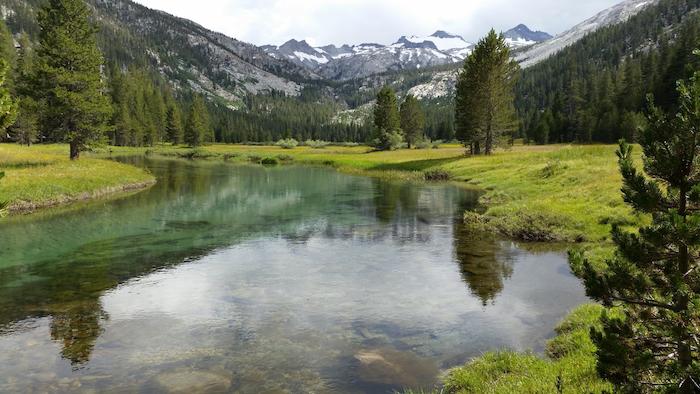
With support from Yosemite Conservancy grants, park crews working in Lyell Canyon are relocating sections of the Pacific Crest/John Muir Trail and restoring wetland habitat damaged by years of trail traffic / NPS
On October 2, 1968, President Lyndon B. Johnson signed the National Trails System Act to promote “the preservation of, public access to, travel within, and enjoyment and appreciation of the open-air, outdoor areas and historic resources of the Nation.”
That legislation established two national scenic trails: the Appalachian Trail (A.T.), which stretches from Georgia to Maine, and the Pacific Crest Trail (PCT), which spans California, Oregon, and Washington. Fifty years after that landmark act, let's take a look at the western part of its inaugural designees.
Nearly 70 miles of the PCT pass through Yosemite National Park, where it overlaps with another famous, slightly older long-distance route: the John Muir Trail (JMT), which was completed in 1938.
The PCT and JMT enter the park together at Donohue Pass and descend into Lyell Canyon. There, you’ll find lush meadow habitat along a fork of the Tuolumne River, flanked by hushed forests. The canyon ecosystem supports diverse wildlife, including mule deer, black bears, and endangered Yosemite toads and Sierra Nevada yellow-legged frogs.
Every year, thousands of PCT and JMT thru-hikers, as well as scores of other backpackers and day hikers, pass through Lyell Canyon. Horses and mules often tread through the canyon, too, carrying riders or backcountry supplies.
All that foot (and hoof ) traffic has proven problematic for the canyon’s meadows. Hikers and animals encountering sodden trail sections step off into the adjacent meadow, inadvertently trampling vegetation and forging deep ruts.

A fork of the Tuolumne River flows through Lyell Canyon, a scenic, serene section of Yosemite’s high country / NPS
Yosemite Conservancy donors have supported numerous grants to protect the PCT/JMT and the Lyell Canyon ecosystem by shifting the trail to drier, more durable ground and restoring wetland in its former footprint. This much-needed work ties back to the 1968 National Trails act: Moving the PCT/JMT helps protect it from further degradation while also preserving the “open-air” resource—healthy habitat—to which it provides access.
You don’t have to go far to experience Yosemite’s long-distance trails. A short stroll on the PCT/JMT from Tuolumne Meadows yields memorable views of rushing water and forest-lined meadow.
If you’re feeling more ambitious, tackle the 24-mile round-trip trek to Donohue Pass—or carve out a few weeks or months for a thru-hike. If you find yourself in Lyell Canyon, look for evidence of recent restoration efforts, and wish the PCT a happy anniversary!
To learn more about this project and other restoration work Conservancy supporters fund in Yosemite, visit yosemiteconservancy.org.









Add comment